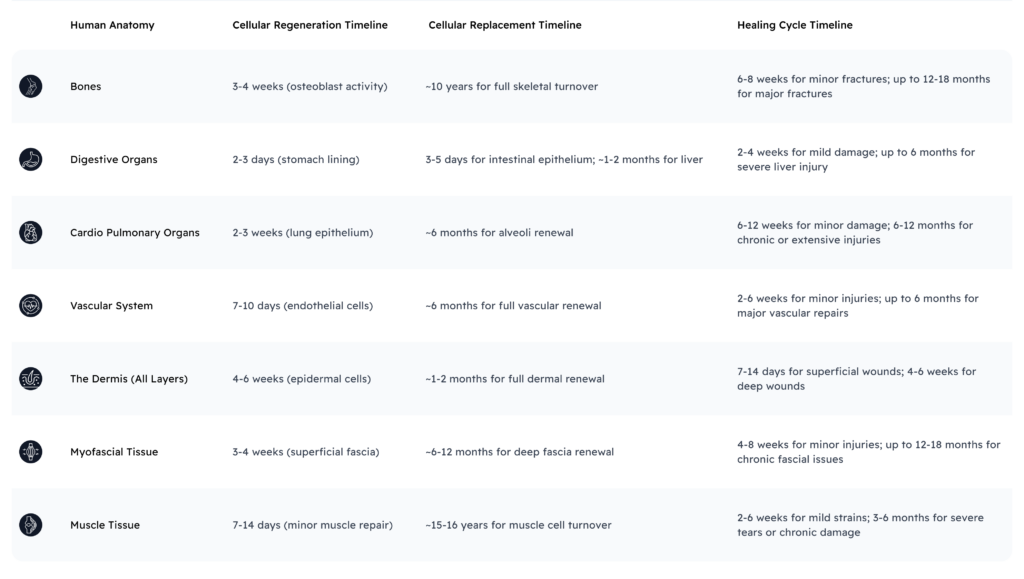The human body operates through four interconnected systems, as detailed in Justin White’s How Your Body Works: the neurological, biomechanical, myological, and myofascial systems. Each plays a unique role in movement and pain management. The neurological system controls motor functions, the biomechanical system provides structural support, the myological system enables movement, and the myofascial system ensures connectivity. Dysfunction in any one system often forces the others to compensate, leading to pain. White’s holistic pain treatment approach addresses all four systems simultaneously. For those exploring non-surgical pain management or chronic pain relief services, this unified approach offers effective, drug-free solutions. Techniques like Neuromuscular Repatterning target dysfunction at its root, restoring balance and allowing for pain-free movement. By focusing on the interconnectedness of these systems, you can achieve sustainable, natural healing.

Understanding the Body’s Healing Cycles Through Its Four Interconnected Systems
The human body is a masterpiece of interconnected systems working together to enable movement, maintain balance, and manage pain. Justin White’s How Your Body Works outlines four primary systems: the neurological, biomechanical, myological, and myofascial systems, each playing a critical role in overall function and well-being. When one system experiences dysfunction, the others must compensate, often resulting in chronic pain and limited mobility. Addressing these systems in unison through techniques like Neuromuscular Repatterning offers a comprehensive, non-surgical path to relief and sustainable healing.
To fully appreciate the body’s healing potential, it is essential to understand the natural timelines of cellular regeneration and repair within its various tissues. Whether you’re seeking relief from chronic pain, recovering from injury, or optimizing movement, aligning your expectations with the body’s biological processes enhances the path to recovery.
The Four Systems and Their Cellular Healing Cycles
1.The Neurological System:
The neurological system orchestrates motor function, controlling how muscles contract and move through nerve signals. Cellular regeneration in this system is tied to its components, such as neurons and supporting cells. While neurons do not regenerate easily, supporting glial cells repair and replace themselves over weeks to months, aiding the recovery of neurological functions.
- Example: Damage to the nervous system can interrupt communication with muscles, leading to compensatory dysfunctions in the biomechanical or myological systems. A unified approach like White’s Neuromuscular Repatterning targets these connections to restore proper movement.
2.The Biomechanical System:
Providing structural support, the biomechanical system encompasses bones and joints. Bones have a robust cellular turnover, with osteoblasts (bone-forming cells) regenerating within 3-4 weeks. Full skeletal cellular replacement takes up to 10 years. However, healing fractures can take 6-8 weeks or longer depending on severity.
- Example: A joint misalignment not addressed early can lead to myofascial compensation, causing chronic pain. Addressing biomechanical issues alongside neurological and myofascial imbalances ensures a comprehensive recovery.
3.The Myological System:
Muscles enable movement and absorb the body’s physical demands. Cellular repair in muscle tissue begins within 7-14 days for minor damage but can take 3-6 months for severe tears. Complete muscle cell turnover takes approximately 15-16 years, making ongoing care essential for long-term health.
- Example: A muscle strain might initially cause pain, but without proper treatment, it can lead to fascial adhesions, restricting movement and causing biomechanical misalignment. Restoring muscle functionality through integrated therapies prevents this chain reaction.
4.The Myofascial System:
Fascia, the connective tissue surrounding muscles, ensures the body’s structural integrity and smooth motion. Superficial fascia regenerates within 3-4 weeks, while deep fascial tissues take 6-12 months to remodel completely. This extended timeline underscores the importance of consistent, intentional therapies for chronic issues.
- Example: Myofascial restrictions from prolonged immobility or repetitive strain can limit joint mobility, further affecting muscle activation and biomechanics. Treating fascia alongside other systems restores movement fluidity.
Healing Timelines and Holistic Pain Relief
By understanding the natural timelines of cellular regeneration and repair, individuals can better navigate their recovery journey. Healing is not instant—it follows the body’s intricate biological rhythms. For example:
- Bones regenerate over a span of 10 years but heal fractures in 6-8 weeks.
- Muscle tissue begins repair within days, but full recovery for severe injuries takes months.
- Myofascial tissues, critical to movement, take up to a year for significant remodeling.
Justin White’s approach emphasizes treating all four systems simultaneously to align with these timelines. Techniques like Neuromuscular Repatterning target dysfunction at the root, reactivating dormant muscles, restoring joint stability, and improving connective tissue health. This method not only addresses pain but also prevents future imbalances by optimizing the interplay between systems.
The Path to Sustainable Healing
Chronic pain often stems from compensations within these interconnected systems. For example, a misaligned joint (biomechanical system) can trigger muscle overuse (myological system), which in turn places stress on connective tissues (myofascial system). Meanwhile, the nervous system may adapt, creating inefficient motor patterns. Traditional pain management methods often address symptoms in isolation, missing the larger picture.
White’s holistic approach, informed by the body’s natural regeneration cycles, focuses on sustainable healing by restoring balance across all four systems. Through non-invasive, drug-free therapies, individuals can regain pain-free movement, improve mobility, and enhance their overall quality of life.
Takeaway: By understanding the body’s regeneration cycles and the interconnectedness of its systems, individuals can make informed decisions about their health. Whether you’re recovering from an injury or seeking relief from chronic pain, embracing this holistic perspective allows for profound, lasting results.

